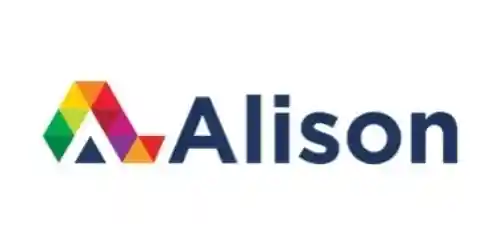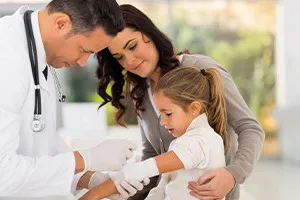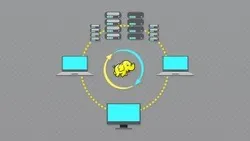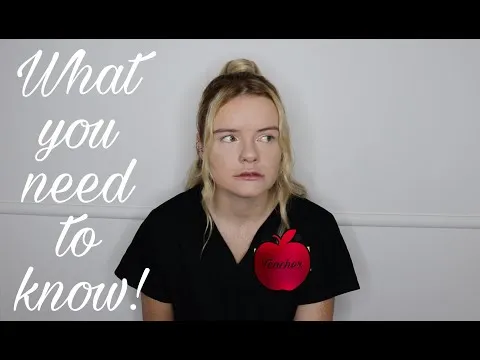
First Aid for Pediatric Emergencies 
Discover how to handle common pediatric emergencies with the comprehensive course, "First Aid for Pediatric Emergencies." Designed for parents, teachers, and guardians, this course covers the essential knowledge and skills needed to manage accidents and mishaps that can occur in the home or school setting. Learn about the seven classifications of pediatric medicine, the differences between adult and pediatric medicine, and the critical milestones in a child's health. With video tutorials on infant CPR and choking prevention, as well as guidance on handling falls, injuries, animal bites, and more, this course will empower you to provide immediate medical care for children in your care. ▼
ADVERTISEMENT
Course Feature
![]() Cost:
Cost:
Free
![]() Provider:
Provider:
Alison
![]() Certificate:
Certificate:
No Information
![]() Language:
Language:
English
Course Overview
❗The content presented here is sourced directly from Alison platform. For comprehensive course details, including enrollment information, simply click on the 'Go to class' link on our website.
Updated in [September 15th, 2023]
What does this course tell?
(Please note that the following overview content is from the original platform)
When expecting a child, a parent's primary preoccupation is ensuring that their baby will be born healthy and without complications. While this is true for most children born today, pediatric accidents in the home can occur, which can cause fatal consequences if you do not take appropriate steps to combat these mishaps. Therefore as a parent, teacher or guardian, you must be fully aware of common pediatric emergencies and how to handle them efficiently. Consequently, we have designed this comprehensive course to help adults manage some of the most prevalent hazards in the home and school settings.
The first two topics in this course stress the importance of pediatric medicine and explain the seven classifications of this age group, along with the significant differences between adult medicine and pediatric medicine. The four critical milestones in a child's health are also included for parents to understand what a pediatrician will look for while examining their child. The course also contains two essential video tutorials that will teach you to perform cardiopulmonary resuscitation (CPR) on an infant and help protect a choking child.
We then illustrate the most commonly occurring pediatric emergencies. These include falls, injuries, cut and puncture wounds, animal bites, insect stings and electrocution, emphasising three common childhood hazards: asthma, choking and food poisoning. We will equip parents or guardians to provide medical care for their children by exploring these emergencies. While all advice in this course comes from authentic sources, you should not consider it an alternative to expert medical advice. Instead, this course will guide you through these potential emergencies to be best prepared to look after the children in your care.
We consider the value of this course from multiple aspects, and finally summarize it for you from three aspects: personal skills, career development, and further study:
(Kindly be aware that our content is optimized by AI tools while also undergoing moderation carefully from our editorial staff.)
What skills and knowledge will you acquire during this course?
By taking this course, participants will acquire the skills and knowledge to:
- Understand the seven classifications of pediatric medicine and the differences between adult and pediatric medicine.
- Learn how to perform cardiopulmonary resuscitation (CPR) on an infant.
- Recognize the four critical milestones in a child's health.
- Identify the most common pediatric emergencies, such as falls, injuries, cut and puncture wounds, animal bites, insect stings and electrocution.
- Provide medical care for their children in the event of an emergency.
- Recognize the three common childhood hazards: asthma, choking and food poisoning.
- Understand the importance of seeking expert medical advice in the event of an emergency.
How does this course contribute to professional growth?
This course on First Aid for Pediatric Emergencies contributes significantly to professional growth for individuals in various roles such as parents, teachers, and guardians. By completing this course, individuals gain a comprehensive understanding of common pediatric emergencies and learn how to handle them efficiently. This knowledge and skill set not only enhances their ability to provide immediate care and support in emergency situations but also instills confidence in their ability to protect and safeguard children under their care.
The course begins by emphasizing the importance of pediatric medicine and highlighting the significant differences between adult medicine and pediatric medicine. Understanding the unique characteristics and needs of children in terms of medical care is crucial for professionals working with children. By grasping the seven classifications of the pediatric age group and the four critical milestones in a child's health, individuals can better comprehend what pediatricians look for during examinations. This knowledge enables them to identify potential health issues and take appropriate action promptly.
The course also includes video tutorials on performing cardiopulmonary resuscitation (CPR) on an infant and assisting a choking child. These practical demonstrations equip individuals with life-saving skills, which are invaluable in emergency situations. By mastering these techniques, professionals can provide immediate assistance to children in distress, potentially saving their lives.
Furthermore, the course covers the most commonly occurring pediatric emergencies, such as falls, injuries, cut and puncture wounds, animal bites, insect stings, and electrocution. It specifically focuses on three common childhood hazards: asthma, choking, and food poisoning. By exploring these emergencies in detail, individuals gain the knowledge and understanding necessary to provide appropriate medical care and support to children in their care.
While the course provides valuable information and guidance, it is important to note that it should not be considered a substitute for expert medical advice. However, completing this course equips professionals with the necessary skills and knowledge to be better prepared for potential emergencies and to provide immediate care until professional medical help arrives.
Overall, this course on First Aid for Pediatric Emergencies significantly contributes to professional growth by enhancing individuals' ability to handle common pediatric emergencies effectively. It equips them with essential knowledge, practical skills, and the confidence to provide immediate care and support to children in their care, ultimately ensuring their safety and well-being.
Is this course suitable for preparing further education?
Yes, this course is suitable for preparing further education in pediatric emergencies. It covers important topics such as the differences between adult and pediatric medicine, how to perform CPR on an infant, and how to handle common pediatric emergencies. The course also provides video tutorials and advice from authentic sources, which can help adults gain the knowledge and skills needed to provide medical care for children.
Course Syllabus
Critical Pediatric Emergencies
In this module, you will learn to classify pediatric age groups, how to perform CPR on children, and how you can rescue a choking child. Similarly, this module discusses hazards for fall injuries and the need to seek help when animal bites are. Lastly, you will study how to respond to an asthma emergency and electrical injuries.Course assessment
Course Provider

Provider Alison's Stats at AZClass
Discussion and Reviews
0.0 (Based on 0 reviews)
Explore Similar Online Courses

Paediatric First Aid

Big Data and Hadoop Essentials

Python for Informatics: Exploring Information

Social Network Analysis

Introduction to Systematic Review and Meta-Analysis

The Analytics Edge

DCO042 - Python For Informatics

Causal Diagrams: Draw Your Assumptions Before Your Conclusions

Whole genome sequencing of bacterial genomes - tools and applications

CHILDCARE JOB Work as a Childcare Educator Australia

Childcare and Young People Development


Start your review of First Aid for Pediatric Emergencies